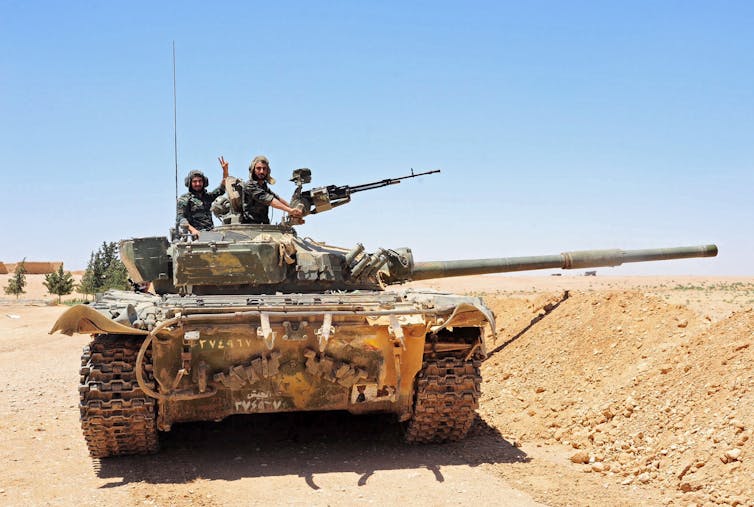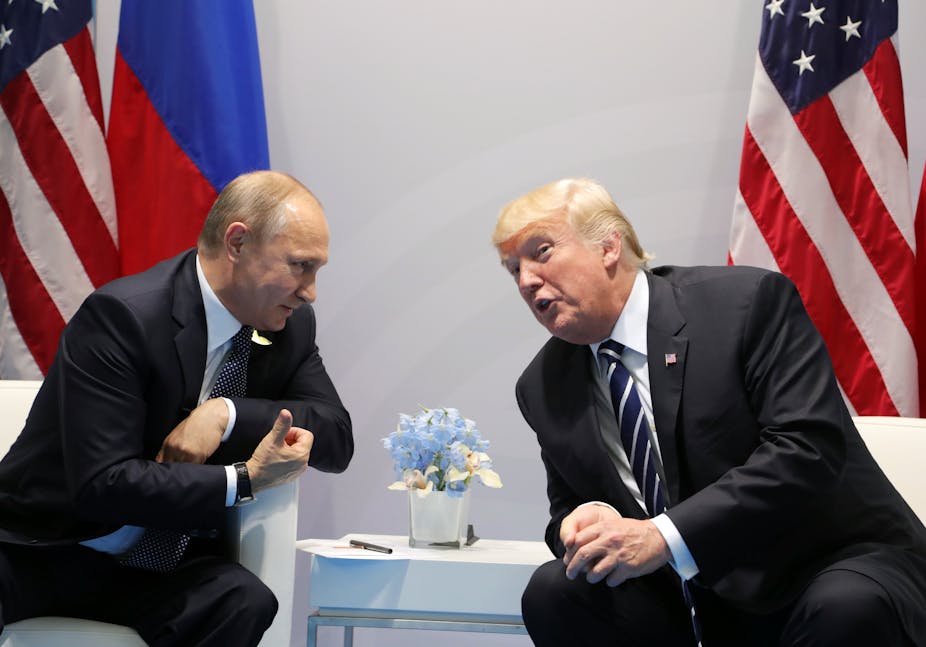The budding relationship between US President Donald Trump and Russian President Vladimir Putin at the G20 Summit in Hamburg was the crowning image of a fractious gathering of world leaders. Yet the promise that an historic agreement has been reached over Syria is a hollow one.
Negotiations between US and Russian officials in Amman, Jordan, prior to the summit allowed the two leaders to look like they were making progress in dealing with the ongoing crisis in Syria. But in reality, the final agreement they reached in Hamburg over a de-escalation of the conflict, confined to a relatively small area of south-western Syria, will only highlight the weaknesses of a US president for whom deal-making is the ultimate test of leadership.
The agreement contains the building blocks for a wider framework for dealing with the Syrian conflict. But it will be almost impossible to maintain. The key fact is that neither the US nor Russia exerts control over all of the disparate factions that are fighting on the ground in Syria. And no agreement between the two nations alone will lead to a resolution of the conflict.
The deal agreed at the G20 aims to establish a ceasefire between the Syrian government and the main opposition forces fighting in the south-west of the country. This de-escalation of the conflict is aimed at paving the way for a larger scale ceasefire across the country.
Instead, this agreement only serves the short-term interests of the US and Russia, as well as those of the Syrian and Jordanian regimes. The tiny pockets of Islamic State-affiliated forces that still maintain a presence in south-western Syria continue to frustrate American and Russian plans to remove them from the region. That they have managed to agree on this area for a de-escalation of fighting between Syrian regime forces and opposition rebel forces is no surprise. This allows both sides to achieve their short-term goals by concentrating Syrian and Russian military efforts on the remaining Islamic State forces.
A win-win for both leaders?
Trump has portrayed the deal as a win domestically, and a welcome victory internationally as other members of the G20 steadfastly oppose him over issues such as climate change.
For Putin, it is a strategic victory. It secures Russia’s short-term goal to reinforce the Syrian regime’s position in the south-west, while cooperating with the Americans in removing the threat of IS.
But hopes that this will lead to a wider de-escalation in the Syrian conflict are in vain. In making this agreement, Putin hasn’t had to sacrifice any of the strategic gains that Russian and Syrian regime forces have made over the last 12-18 months, meaning the agreement hasn’t been tested against a key measure of any larger ceasefire.
In addition, Russia has no strategic interest in securing territory for its own forces within south-west Syria. Russia’s main interests lie in maintaining the Russian naval base at Tartus, in the west, and in securing the expansive military air base in Latakia, in the north-west. These assets allow Russia to project military power into the Mediterranean and across the wider Middle East.

If this de-escalation agreement were to provide any sort of solution to the Syrian crisis at large, then it would first have to be tested in an area of Syria that poses a threat to Russian and Assad regime interests. Until that time, there is no concrete evidence to suggest that it will go any further than rhetorical grandstanding.
Dead in the water
The de-escalation deal is also complicated by the disparate group of actors on the ground. For a start, Israel will be unlikely to continue to allow Syrian regime forces to transport weapons to the Lebanese militia group Hezbollah through the south-west of Syria, near the Golan Heights. If Israel were to conduct air strikes within the area, as it has done on multiple occasions, it is difficult to see how the de-escalation agreement can be maintained.
For the Jordanians, meanwhile, the agreement provides some potential relief from the continued threat the Syrian crisis poses to its internal stability, through the cross border movement of refugees and the influx of IS-affiliated individuals. Jordanian support alone, however, is not enough to secure the de-escalation deal’s success.
Iranian-backed interests in both Syria and the region also pose an increasing threat to US policy. The deal between Trump and Putin is in part an attempt by the US to reign in Iran’s growing influence over vast swathes of Syria and Iraq. The Iranians, however, along with their proxy forces on the ground, are unlikely to accept that this de-escalation agreement applies to them.
Trump has agreed a hollow deal over Syria, a deal that is doomed to fail in the long run without the cooperation of groups fighting on the ground. Responsibility for this failure will rest squarely with the American administration that has given it legitimacy, rather than with the Russians who have already proved unwilling to maintain ceasefire agreements. That Trump has still made this deal shows the ineptitude of an American president who is out of his depth when it comes to foreign policy deal-making.
Russia, on the other hand, has been welcomed back into the international community by the open arms of America. Putin’s opening gambit in the new Great Game has outfoxed Trump the deal-maker already.

